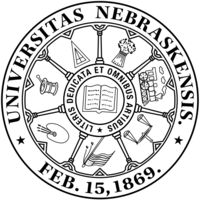预约演示
更新于:2025-05-07
ATPase
更新于:2025-05-07
基本信息
别名 ATPases、腺苷三磷酸酶 |
简介- |
关联
218
项与 ATPase 相关的药物作用机制 钾离子竞争性酸阻滞剂 |
在研机构 |
最高研发阶段批准上市 |
首次获批国家/地区 中国 |
首次获批日期2024-12-01 |
作用机制 ATPase抑制剂 [+1] |
非在研适应症 |
最高研发阶段批准上市 |
首次获批国家/地区 韩国 |
首次获批日期2024-04-24 |
作用机制 钾离子竞争性酸阻滞剂 |
在研适应症 |
非在研适应症- |
最高研发阶段批准上市 |
首次获批国家/地区 美国 |
首次获批日期2022-05-03 |
2,589
项与 ATPase 相关的临床试验NCT06872112
Phase I Study: a Dose-Escalation Study Evaluating the Safety and Tolerability of Artesunate in Patients with Pulmonary Arterial Hypertension
This is a 20-week, Phase 1, single-center, open-label, dose-escalation study evaluating the safety and tolerability of daily oral artesunate in patients with PAH.
开始日期2026-01-01 |
申办/合作机构 |
NCT03643367
Sevoflurane Sedation: a Potentially Promising Immunomodulation in Patients with Septic Shock
Recent in vivo studies from others as well as the investigators group demonstrated that volatile anesthetics immunomodulate sepsis and improve outcome. Also, several clinical trials have convincingly shown that application of a volatile anesthetic provides protection in patients undergoing major surgery.
Patients with sepsis are intubated and ventilated and therefore need sedation. So far, most ICU centers use intravenously applied sedatives in these patients. In the proposed study, we will switch sedation from an intravenous to a volatile anesthetic for a short period of time to explore if sepsis markers improve within the following 120 hours upon sevoflurane conditioning.
Patients with sepsis are intubated and ventilated and therefore need sedation. So far, most ICU centers use intravenously applied sedatives in these patients. In the proposed study, we will switch sedation from an intravenous to a volatile anesthetic for a short period of time to explore if sepsis markers improve within the following 120 hours upon sevoflurane conditioning.
开始日期2026-01-01 |
申办/合作机构  University of Zurich University of Zurich [+2] |
NCT06012929
A Pilot Study, Open-Label Study of ONC201 for Refractory Meningioma
The goal of this clinical trial is to learn about treatment for a type of brain tumor called a meningioma. This study will enroll two groups of people. One group will be for people who will receive surgery to remove their brain tumor. The other group will be for people who have previously received treatment for their brain tumor but do not have any other available options for treatment.
The primary goals of this study are:
1. To measure how much of the study drug is present in tumor tissue taken from patients during surgery to remove their brain tumor
2. To measure the length of time between a study participant's first dose of study treatment until the time when their brain tumor gets worse or their death
The primary goals of this study are:
1. To measure how much of the study drug is present in tumor tissue taken from patients during surgery to remove their brain tumor
2. To measure the length of time between a study participant's first dose of study treatment until the time when their brain tumor gets worse or their death
开始日期2025-12-01 |
申办/合作机构 |
100 项与 ATPase 相关的临床结果
登录后查看更多信息
100 项与 ATPase 相关的转化医学
登录后查看更多信息
0 项与 ATPase 相关的专利(医药)
登录后查看更多信息
56,952
项与 ATPase 相关的文献(医药)2025-12-31·Hematology
Identification of RUVBL2 as a novel biomarker to predict the prognosis and drug sensitivity in multiple myeloma based on ferroptosis genes
Article
作者: Tang, Sishi ; Fu, Yunfeng ; Jiang, Siyi ; Liu, Jing ; Long, Xinyi ; Li, Fangfang
2025-12-31·mAbs
Online native hydrophobic interaction chromatography-mass spectrometry of antibody-drug conjugates
Article
作者: Cadang, Lance ; Kempen, Trevor ; Fan, Yuchen ; Chen, Tao ; Wei, Bingchuan ; Zhang, Kelly
2025-12-31·Plant Signaling & Behavior
The nuclear dynamic of CDC48 is affected during the immune response in plants
Article
作者: Courty, Pierre-Emmanuel ; Inès, Damien ; Rosnoblet, Claire ; Wendehenne, David ; Winckler, Pascale ; Leray, Aymeric
530
项与 ATPase 相关的新闻(医药)2025-05-05
·生物探索
引言我们身体里的每个细胞都是一个微缩宇宙,里面运行着无数精密复杂的系统。这些系统的核心,是千姿百态的蛋白质(Proteins),它们就像宇宙中的不同星球,执行着各自独特的任务,但更重要的是,它们通过相互作用(Protein-protein interactions)形成复杂的蛋白质网络(Protein networks),共同维持着宇宙的和谐运转。这些蛋白质“朋友圈”的面貌,直接决定了细胞的功能和状态,一旦出现问题,往往是疾病的开端。研究人员多年来绘制了大量蛋白质相互作用图谱,试图揭示生命的奥秘。然而,这些图谱大多像是一张笼统的世界社交地图,无法告诉你具体某个城市(比如肝脏或大脑)里的蛋白质关系是怎样的。因为蛋白质的“社交圈”并非一成不变,它会随着所处的组织(Tissue)、细胞类型甚至细胞状态而高度特异化(Tissue specificity)。缺失了这种“情境”信息,我们对疾病发生机制的理解就像是隔靴搔痒。有没有可能绘制一张真正精细到组织的蛋白质“朋友圈”地图呢?5月2日发表在《Nature Biotechnology》上的重磅研究“A tissue-specific atlas of protein–protein associations enables prioritization of candidate disease genes”,正带来了这样的突破。研究团队创造性地利用大量数据——来自11种人体组织的7,811份蛋白质组学样本的蛋白质丰度信息,通过分析蛋白质在不同样本中的共丰度(Protein coabundance),构建了一份前所未有的组织特异性蛋白质关联图谱(A tissue-specific atlas of protein-protein associations)。令人惊喜的是,这项研究发现蛋白质共丰度是一个极其强大的预测指标,它能非常准确地识别蛋白质之间的关联,甚至在某些方面优于传统的蛋白质共分级(Protein cofractionation)方法。更重要的是,图谱清晰地揭示了蛋白质关联存在广泛的组织特异性——据估计,超过25%的关联是特定于某个组织的!而且,这种差异的驱动力远不止简单的基因表达,更多来自于组织或细胞特有的细胞组分(Cellular components)变化。这张详细的图谱不仅能帮助我们更深入地理解不同组织中细胞结构的独特组成,更提供了一个强大的新工具:它可以帮助我们以前所未有的精度,在复杂的遗传关联位点中,优先筛选出最可能导致疾病的那个“致病基因”(Disease gene),特别是在特定组织相关的疾病中。海量样本汇聚:构建蛋白质关联的基石要绘制一张宏大的图谱,首先需要海量的数据。这项研究收集了来自50项已发表研究的蛋白质组学数据,这些研究涵盖了14种人类组织。样本总数高达7,811份,其中包括来自肿瘤的5,726份样本和来自邻近健康组织的2,085份样本。这些样本为研究团队提供了丰富的蛋白质丰度信息。为了进行更全面的比较,研究人员还为其中约2,900份肿瘤样本和722份健康样本收集了配对的mRNA表达数据。研究人员利用蛋白质共丰度来估计蛋白质对(Protein pair)之间发生关联的可能性。具体来说,他们计算了同一研究中至少在30个样本中都能检测到的一对蛋白质的丰度曲线之间的皮尔森相关系数(Pearson correlation)。相关性越强,说明这对蛋白质共丰度的趋势越一致,它们也就越有可能存在功能关联。为了将这些相关系数转化为易于理解的概率,研究团队使用了逻辑模型(Logistic model)。他们利用已知的稳定蛋白质复合体(比如来自CORUM数据库的数据)作为阳性样本(Ground-truth positives),也就是已知有相互作用的蛋白质对。通过训练逻辑模型,研究人员可以将任何一对蛋白质的共丰度相关系数转化为一个介于0到1之间的概率,表示这对蛋白质发生关联的可能性。这项研究总共汇集了来自不同研究的超过110万个蛋白质对的关联概率,这些数据为构建组织特异性图谱奠定了坚实的基础。共丰度:预测蛋白质关联的有力工具那么,利用蛋白质共丰度来预测蛋白质关联,效果究竟如何呢?研究团队将这种方法与另外两种常用方法进行了比较:mRNA共表达和蛋白质共分级(Protein cofractionation)。蛋白质共分级是一种通过分离细胞组分并分析蛋白质在不同组分中的丰度来推断相互作用的方法,通常被认为是预测物理相互作用的黄金标准之一。为了评估这些方法的性能,研究人员同样使用CORUM数据库中的已知蛋白质复合体成员作为阳性样本,计算了受试者工作特征曲线下面积(Area Under the Curve, AUC)。AUC是一个衡量分类器性能的指标,值越高表示预测准确性越高。结果显示,基于蛋白质共丰度的关联概率在回收已知蛋白质复合体成员方面的表现最优,其平均AUC达到了0.80(标准误 ± 0.01)。这显著优于蛋白质共分级数据(平均AUC 0.69 ± 0.01)和mRNA共表达数据(平均AUC 0.70 ± 0.01)。这一发现非常有意义,它表明仅仅通过蛋白质在不同样本中的丰度变化,就能相当准确地推断出它们的功能关联。更有趣的是,研究人员尝试将mRNA和蛋白质丰度数据结合起来,但这种组合并没有显著提高召回已知复合体成员的性能(平均AUC 0.82 ± 0.01),与单独使用蛋白质共丰度相比,差异不具有统计学意义(P = 0.15)。此外,即使在计算蛋白质共丰度估计之前,先从蛋白质丰度中去除基因表达的影响,得到的AUC也仅轻微下降到0.78(标准误 ± 0.01),差异也不具有统计学意义(P= 0.18)。这强烈暗示,蛋白质共丰度的预测能力主要来自于转录后过程(Post-transcriptional processes)的影响,而不是简单的基因表达水平变化。这意味着,蛋白质的降解、修饰或复合体组装动力学等因素,可能比基因表达本身更能驱动蛋白质之间的共丰度关系,进而反映它们的功能关联。图谱初显:组织特异性关联的面貌既然蛋白质共丰度能够有效地预测蛋白质关联,并且主要反映了转录后过程,那么这些关联是否具有组织特异性呢?研究人员首先通过基因表达数据确认,蛋白质关联概率并非简单地由细胞类型组成(Cell-type composition)差异引起。随后,他们分析了来自所有研究的1,115,405个关联概率,发现来自同一组织的重复队列通常会聚集在一起。例如,来自不同血液样本研究的数据会聚类,来自不同脑组织样本的数据会聚类,来自不同肝脏样本和肺脏样本的数据也表现出类似的聚类模式。这有力地证明了组织来源是导致不同研究队列之间蛋白质关联差异的主要驱动因素。在比较同一组织(AUC 0.71 ± 0.01)和不同组织(AUC 0.56 ± 0.00)对恢复组织特异性关联的能力时,这种差异在所有组织中都具有统计学意义(P < 0.05)。基于不同队列聚类的结果,研究团队将来自同一组织的重复队列的关联概率进行聚合,为11个人体组织计算了单一的组织级关联得分(Association scores)。这种聚合方法被证明是有效的,因为它在恢复已知蛋白质相互作用方面的表现优于绝大多数单个队列(P = 1.3 × 10⁻¹⁰)。值得注意的是,来自肿瘤样本计算得到的关联得分在预测已知蛋白质相互作用方面优于来自健康组织样本的得分(肿瘤AUC 0.87 ± 0.01,健康AUC 0.82 ± 0.01,差异具有统计学意义 P = 8.3 × 10⁻⁵)。这可能是因为肿瘤样本由于遗传异质性等因素,样本间的变异性更大,反而有助于识别更稳健的共丰度模式。尽管如此,肿瘤来源的得分仍然能够很好地恢复健康组织的组织特异性关联(同一健康组织AUC 0.74 ± 0.02,其他健康组织AUC 0.53 ± 0.01,差异具有统计学意义 P = 5.9 × 10⁻⁵)。这些分析共同表明,基于蛋白质共丰度计算的组织级关联得分是可重复的,并且能够代表蛋白质关联在特定组织中的情况。最终,研究人员构建了一份包含1.16亿个蛋白质对在11种人体组织中的关联得分图谱。平均而言,每个组织包含约5600万个蛋白质对的关联得分,其中约1000万个蛋白质对被认为是“可能关联”(Likely associated,得分大于0.5),约49万个蛋白质对被认为是“高可信关联”(Confident associations,得分大于0.8)。这些关联在不同组织中的分布差异很大,只有约99,103个蛋白质对在所有11个组织中都被认为是可能关联的。这初步揭示了蛋白质关联具有显著的组织特异性。组织间的差异:远不止基因表达一个长期存在的观点认为,组织间蛋白质相互作用的差异主要源于基因表达水平的差异——如果一个蛋白质在某个组织中不表达,那它自然也无法参与该组织中的相互作用。这项研究证实,在特定组织中能被检测到的蛋白质,其在同一组织中的表达水平普遍高于其他组织(P = 1.3 × 10⁻⁶)。然而,研究团队发现,组织间(可能关联)关联差异中,只有最高7%可以通过基因表达水平差异来解释,而且这部分解释力主要来自于蛋白质在某些组织中完全检测不到的情况。这进一步支持了先前的发现,即蛋白质共丰度主要受转录后过程驱动,组织间的关联差异并不仅仅是基因表达的简单反映。为了量化组织特异性关联的比例,研究人员发现,在比较同一健康组织和肿瘤组织的重复样本时,约46.3%的可能关联(得分大于0.5)和90.2%的高可信关联(得分大于0.8)在重复样本中仍然被认为是可能关联的。而在比较不同组织之间的关联时,这些比例分别下降到32.9%和54.6%。基于重复样本与不同组织之间的这些概率差异,研究人员估计,在可能的关联中,有18.8%到34.0%(四分位数间距)是组织特异性的。考虑到最高7%的可能关联因为基因表达差异而在其他组织中未被检测到,研究最终估计,超过25.8%(即18.8% + 7%)的可能关联是组织特异性的。这意味着,组织间的蛋白质“朋友圈”不仅面貌各异,而且这种差异的很大一部分是由基因表达以外的因素驱动的,这些因素可能包括组织或细胞类型特有的蛋白质修饰、定位、稳定性或与特定细胞器、结构的关联。细胞组分:组织特异性关联的关键驱动力组织间的蛋白质关联差异是由什么决定的?研究人员通过分析不同组织中可能关联的共享程度来探索这个问题。他们发现,与所有可能关联(平均Jaccard指数 0.19)相比,如果仅限于已知的高通量实验(如酵母双杂交HuRI,Jaccard指数 0.30;AP BioPlex,Jaccard指数 0.41)检测到的相互作用,或者仅限于已知生物学途径(如Reactome,Jaccard指数 0.48)、信号通路(如SIGNOR,Jaccard指数 0.32)中的相互作用,或者物理相互作用(如STRING得分大于400,Jaccard指数 0.56),组织间的相似性会有所增加。如果仅限于人类蛋白质复合体(如CORUM,Jaccard指数 0.74),组织间的相似性则最高。这意味着,已知的蛋白质相互作用,特别是稳定复合体中的相互作用,在不同组织间通常是共享的。然而,研究人员也发现,那些在不同组织中变化较大的关联,往往与特定的细胞组分(Cellular components)相关。例如,大脑组织中与突触(Synapse)相关的组分、喉部组织中与肌肉纤维结构相关的组分、肺部组织中与运动纤毛(Motile cilia)相关的组分以及肝脏组织中与过氧化物酶体(Peroxisomes)相关的组分,其蛋白质关联在不同组织间表现出强烈的差异性。这表明,组织特异性或细胞类型特异性的细胞组分是驱动组织间蛋白质关联差异的重要因素,而且这种差异独立于简单的基因表达差异。研究团队进一步探索了图谱中细胞类型特异性关联的例子。以AP2衔接蛋白复合体(AP2 adaptor complex)为例,它在所有细胞中都具有普遍功能,但在神经元中也有特异性功能。图谱显示,AP2复合体亚基在所有组织中都是共丰度的(平均关联得分0.80)。然而,在与AP2复合体关联且已知与之相互作用(STRING得分大于400)的91个蛋白中,51个突触蛋白(SynGO数据库中的蛋白)在大脑中的关联得分(平均0.54)高于其他组织(平均0.48 ± 0.00,P = 6.7 × 10⁻⁶)。相反,非突触蛋白在大脑中的关联得分(平均0.33)低于其他组织(平均0.43 ± 0.00,P = 1.1 × 10⁻²¹)。这生动地展示了即使是普遍存在的蛋白质复合体,其与不同功能蛋白质的关联也可能具有组织或细胞类型特异性。图谱还能揭示疾病相关的细胞类型特异性关联。例如,血红蛋白(Hemoglobin)蛋白与贫血(Anemia)相关,在图谱中,它们与贫血相关蛋白的可能关联只在血液组织中出现。同样,乳糜微粒(Chylomicron)亚基与克罗恩病(Crohn's disease)相关,它们与克罗恩病相关蛋白的可能关联只在结肠(Colon)组织中出现。纤维蛋白原(Fibrinogen)亚基与肝脏疾病相关,它们与肝脏疾病相关蛋白的肝脏特异性可能关联也被发现。这些例子表明,这份关联图谱可以用来研究蛋白质复合体的组织特异性功能以及疾病基因在特定情境下的关联。研究人员还将这种分析推广到更广阔的层面,系统性地绘制了性状(Traits,基于GWAS数据)与细胞组分之间的关系图谱。他们发现,在所有组织中都得分较高的关系主要涉及核心细胞组分,如核糖体(Ribosome)和剪接体(Spliceosome)(72%的关系相对平均得分大于1.75)。而那些在不同组织中变异最大的关系(变异系数大于0.4)往往涉及组织特异性结构,比如突触组分(Synaptic components)(61%的关系属于这一类)。这些发现再次印证了细胞组分,特别是组织特异性组分,在决定蛋白质集合的组织特异性相关性中扮演的关键角色。疾病基因“C位”:基于图谱的精准排序理解蛋白质关联的组织特异性如何应用于疾病研究?研究团队利用这份图谱来优先排序(Prioritize)疾病相关基因,特别是那些位于遗传关联位点(Loci)的候选基因。已知与疾病基因直接相互作用的蛋白通常更可能是致病基因,并且在成功的药物靶点中富集。为了更深入地探索这一点,研究人员构建了一个针对精神分裂症(Schizophrenia, SCZ)相关基因的大脑相互作用网络,旨在优先排序大脑中那些得分较高且涉及SCZ相关基因的关联。研究始于369个通过GWAS研究与SCZ关联的基因(“起始基因”,L2G得分大于等于0.5)。他们计算了这些起始基因与各自组织中得分最高的25个性状和细胞组分之间的关系。随后,研究人员筛选出那些包含一个SCZ起始基因和一个SCZ相关基因的蛋白质对,并要求它们在大脑中的关联得分高于该组织得分分布的97%分位数(在大脑中平均得分0.73)。由此得到了SCZ相关基因的组织特异性关联网络。令人鼓舞的是,移除SCZ起始基因后,该大脑网络中剩余的基因仍然富集于与SCZ相关的基因,这些证据来自小鼠SCZ表型(Mouse phenotypes)(BH校正P值 1.5 × 10⁻⁵)、SCZ药物靶点(BH校正P值 9.8 × 10⁻⁵)以及GWAS中关联较弱的变异(BH校正P值 1.0 × 10⁻⁷)。与其他组织相比,这种富集性是特定于大脑的。这表明,所提出的方法提供了一种系统性地优先排序组织特异性性状疾病基因的途径。为了进一步验证这些预测的SCZ相关基因关联,研究人员汇编了一个实验验证过的人类大脑相互作用数据集,这些数据主要来自使用人类大脑细胞(AP-MS或CoIP-MS)进行的Pull-down实验。该数据集包含了7,887个与30个“诱饵蛋白”(Bait proteins)相关的人类大脑相互作用。研究人员筛选出该数据集中与SCZ相关的诱饵蛋白,并将组织特异性SCZ相关基因网络过滤到只包含至少一个诱饵蛋白的关联。结果发现,这些SCZ相关基因的关联强烈富集于与SCZ相关诱饵蛋白的Pull-down相互作用中,尤其是在大脑中(log BH校正P值高达84.3),远远高于其他组织(平均log BH校正P值仅为1.8)。这有力地证明了该研究预测的大脑SCZ相关基因关联得到了实验验证,并且确实富集于SCZ相关的互作蛋白。整合多源证据:深入理解并发现新靶点在实验验证的基础上,研究人员从优先排序的大脑SCZ相关基因关联中,筛选出那些也通过Pull-down研究发现的相互作用,构建了一个包含205个已验证的大脑SCZ相关基因相互作用网络。为了简化并突出重点,他们进一步将网络限制在具有先前证据的突触(SynGO)基因。这个可视化网络包含56个蛋白质,通过66个已验证的大脑相互作用连接到3个诱饵蛋白。这些蛋白质中包括3个SCZ药物靶点(临床阶段2或更高)、12个与小鼠SCZ相关的蛋白(IMPC得分大于等于0.5)以及15个与SCZ相关但先前证据较弱的蛋白(OTAR L2G得分小于0.5)。令人惊讶的是,在这205个已验证的相互作用中,只有4个在主要蛋白质相互作用数据库中被报告过。这个网络富集了典型的神经元功能和SCZ相关的细胞组分基因群,比如突触后细胞骨架(Postsynaptic cytoskeleton)(BH校正P值 2.3 × 10⁻⁸)和网格蛋白包被囊泡(Clathrin-coated vesicles)(BH校正P值 9.4 × 10⁻¹⁴)。特别是,与网格蛋白囊泡相关的组分,该网络连接了AP2复合体的所有亚基和网格蛋白与HCN1蛋白的相互作用。有研究表明,HCN通道与TRIP8b直接相互作用,TRIP8b调节HCN通道的运输,并主要与AP2复合体关联。鉴于中间白蛋白阳性(PV)神经元与SCZ之间的已知联系,这些观察结果提示AP2和网格蛋白可能参与了与SCZ相关的PV神经元HCN通道运输的特定障碍。为了提出已验证SCZ相关基因大脑相互作用的潜在界面模型,研究人员利用AlphaFold2预测了205个蛋白质相互作用的结构,包括可视化网络中的所有相互作用。这些预测模型得到的相互作用置信度(pDockQ得分平均0.28)高于CORUM(平均0.13)和HuMAP(平均0.25)中已知复合体成员的模型。总共识别出15个中等置信度的相互作用(界面预测模板建模ipTM得分大于0.5)。这其中包括所有三个14-3-3蛋白(YWHAG, YWHAH, YWHAZ)与HCN1的大脑特异性结合(平均关联得分0.82)。这三个模型的预测界面重叠,位于HCN1的C端无序区域(残基775-802),包含一个预测的14-3-3结合位点(中心位于S789,预测结合位点ipTM得分平均0.75)。这一结合位点已通过Pull-down实验验证,且已知14-3-3蛋白与HCN1的结合依赖于S789的磷酸化,这种相互作用可能抑制HCN1的降解。最后,该网络还包含15个位于与SCZ遗传关联位点的基因,它们作为致病基因的证据相对较弱。考虑到它们与SCZ相关基因的相互作用,这些基因更有可能因其功能作用而成为潜在的致病基因。例如,AP2B1, ATP2B2和SYNGAP1这三个基因的L2G得分(分别为0.457, 0.264和0.251)低于研究设定的0.5截止值,但由于它们与SCZ相关基因的相互作用而被优先排序。另一个例子是PAFAH1B1,虽然其L2G得分较低,但它在突触组分中富集,且与另一种突触蛋白RHOA存在相互作用。尽管PAFAH1B1作为致病基因的证据较弱,但其与大脑疾病(如抑郁症)的关联以及其在突触的特异性位置和表达,使得它在抑郁症相关的优先级排序中被提升。这些例子表明,结合遗传学数据、组织特异性网络和AlphaFold2结构预测,可以构建一个整合的网络,增强对疾病机制的理解并助力靶点优先排序。所预测的疾病-基因关联倾向于组织特异性,这可能意味着所提出的靶点也更安全。绘制涵盖人体所有组织的蛋白质相互作用图谱,一直是一个巨大的挑战。这项研究利用大规模蛋白质组学样本的蛋白质共丰度,构建了一份全面的组织特异性蛋白质关联图谱,包含了1.16亿个蛋白质对在11个组织中的关联得分。研究证实,蛋白质共丰度是预测蛋白质功能关联的有力工具,其准确性甚至优于蛋白质共分级和mRNA共表达。这份图谱成功地重建了已知的蛋白质复合体和更大的细胞结构组织,并揭示了蛋白质关联存在显著的组织特异性,其中超过25%的关联是组织特异性的,而基因表达差异仅能解释其中不到7%。组织特异性的细胞组分,如突触,被发现是驱动组织间差异的主要因素。该图谱不仅能揭示蛋白质复合体和细胞组分的组织特异性功能,还能关联性状与细胞组分,并为疾病基因的优先排序提供依据。研究以精神分裂症为例,展示了如何利用图谱构建SCZ相关基因在大脑中的相互作用网络,并通过Pull-down实验和AlphaFold2结构预测对这些关联进行验证。结果显示,通过结合多种证据来源,可以有效地筛选出更可能为致病基因的候选者,即使他们在遗传关联位点上的证据相对较弱。这种方法为理解复杂疾病(特别是神经系统疾病)的分子机制提供了新的视角,并为发现更具组织特异性的药物靶点奠定了基础。当然,共丰度推断的“蛋白质关联”并非都是直接的物理相互作用,这是一种功能层面的关联,它可能受到蛋白质复合体稳定性、蛋白质定位、翻译后修饰等多种因素的影响。未来的研究可以进一步整合更多数据源(如蛋白质修饰组学、空间蛋白质组学等)以及更先进的计算方法,来完善这份图谱,并区分不同类型的蛋白质关联。尽管如此,这份组织特异性蛋白质关联图谱已经为我们提供了一张前所未有的蛋白质“朋友圈”地图,有望加速对复杂疾病机理的理解,并为精准医疗和药物开发带来新的突破。参考文献Laman Trip DS, van Oostrum M, Memon D, Frommelt F, Baptista D, Panneerselvam K, Bradley G, Licata L, Hermjakob H, Orchard S, Trynka G, McDonagh EM, Fossati A, Aebersold R, Gstaiger M, Wollscheid B, Beltrao P. A tissue-specific atlas of protein-protein associations enables prioritization of candidate disease genes. Nat Biotechnol. 2025 May 2. doi: 10.1038/s41587-025-02659-z. Epub ahead of print. PMID: 40316700.声明:本文仅用于分享,不代表平台立场,如涉及版权等问题,请尽快联系我们,我们第一时间更正,谢谢!往期热文:Cell | 颠覆认知!不是被动扩散,CD36介导内吞才是许多“大块头”药物入胞的秘密通道Nature Methods | mScarlet3-H:红色荧光蛋白的新一代王者!Nature Methods | 告别“平面时代”!光学显微镜如何带你看清3D细胞世界的秘密?Nature | 帕金森病新曙光!iPS细胞人体试验结果揭晓,安全有效性初显!Cell | 实时见证“基因之吻”:Oligo-LiveFISH高精度追踪增强子-启动子动态互作Nature Biotechnology | 重磅综述:不止CAR-T!唤醒免疫“特种部队”,工程化先天细胞开启抗癌新纪元
基因疗法
2025-05-04
DRUGAI尽管蛋白–蛋白相互作用图谱已取得显著进展,其在不同组织中的特异性仍研究不足。在本研究中,研究人员基于蛋白质共丰度可预测功能关联的前提,整合并分析了来自11个人体组织的7,811个蛋白质组学样本的蛋白丰度数据,构建了一个组织特异性的蛋白相互作用图谱。研究人员发现,该方法不仅能复现已知的蛋白复合物,还能揭示细胞的更大结构组织。稳定蛋白复合物的相互作用在各组织中高度保守,而细胞类型特异性的结构(如突触成分)则是组织间差异的重要驱动因素。研究结果显示,超过25%的蛋白关联具有组织特异性,其中不到7%可归因于基因表达差异。针对脑组织,研究人员通过突触体的共分级实验、脑源拉下数据的人工整理以及AlphaFold2结构建模,对蛋白相互作用进行了验证。进一步地,研究人员还构建了与精神分裂症相关基因的脑组织相互作用网络,表明该方法可用于在与脑疾病相关的基因座中功能优先筛选候选致病基因。蛋白–蛋白相互作用决定了细胞的物理结构和功能,其异常可能导致疾病。尽管近年来质谱技术和高通量筛选方法的进步推动了蛋白互作的研究,现有数据库多为不具上下文的全局互作信息,而实际互作在不同组织或细胞状态中具有高度特异性,且不到一半的蛋白可在所有组织中检测到。为理解细胞类型特异功能、识别药物靶点以及构建系统级细胞模型,明确蛋白互作的组织特异性至关重要。以往研究常借助基因表达数据推测组织特异性互作,但mRNA共表达对预测蛋白互作的准确性有限。相比之下,蛋白共丰度(coabundance)被证明更能准确预测蛋白关联,因为复合物亚基往往协同表达并以特定化学计量组装,未配对亚基则倾向降解。在本研究中,研究人员基于7,811个人体样本的蛋白质共丰度数据,构建了涵盖11种组织、约1.16亿对蛋白的组织特异性蛋白关联图谱。该图谱不仅复现了已知复合物,还揭示了功能模块间的关系,并为疾病相关基因提供了上下文关联线索。研究人员以脑组织为例,结合多种互补数据验证该图谱在组织特异性致病基因和互作优先排序中的应用价值。研究结果基于蛋白共丰度的全基因组蛋白关联评分研究人员首先收集了癌症队列的蛋白质丰度数据,汇总了来自14种人体组织的50项蛋白质组学研究,包含5,726个肿瘤样本和2,085个邻近健康组织样本,并配套收集了其中2,930个肿瘤样本和722个健康样本的mRNA表达数据。利用蛋白复合物成员在转录和翻译后水平的共调控特性,研究人员计算了基于丰度数据的蛋白–蛋白关联概率。具体而言,先对数据进行对数转换和中值归一化,再在每项研究中对至少在30个样本中被共同检测的蛋白对计算皮尔逊相关系数。随后,以已知蛋白复合物亚基为正例(来自CORUM数据库),利用逻辑回归模型将相关性估计转换为蛋白关联概率。通过与蛋白共分级和mRNA共表达等方法对比,研究人员发现蛋白共丰度在复现已知蛋白复合物上表现最佳(AUC=0.80),优于蛋白共分级(AUC=0.69)和mRNA共表达(AUC=0.70)。将mRNA与蛋白丰度联合使用并未进一步提升识别能力,且剔除基因表达后所得共丰度估计仍表现良好,提示预测能力主要源于翻译后调控而非基因表达。因此,研究人员最终仅使用蛋白共丰度来计算蛋白关联概率。构建组织特异性蛋白关联图谱研究人员进一步验证了同一组织的不同研究是否能反映一致的组织特征。通过聚类分析,发现相同组织的样本之间具有较高一致性。定义“组织特异性”的蛋白关联为:在某一组织中关联评分高于95百分位且在其他组织中低于0.5。使用“留一法”验证后发现,这些组织特异性关联主要由相应组织的样本所复现,说明组织来源是蛋白关联差异的关键驱动因素。聚合相同组织的研究数据后,研究人员为11个人体组织生成了统一的蛋白关联评分。在已知蛋白互作的复现能力上,组织层级的评分优于任何单个队列,且肿瘤来源数据的表现优于健康组织。这些评分反映了肿瘤的遗传异质性及样本之间的变异。研究人员还利用健康组织得出的特异性关联,用肿瘤样本数据进行验证,结果显示一致性良好,进一步验证了该图谱的可靠性和代表性。最终,研究人员构建了一个涵盖116,000,000对蛋白的组织特异性关联图谱,平均每个组织包含约5,600万对蛋白评分,其中约1,000万对具有较高关联性(评分>0.5),约49万对属于“高可信关联”(评分>0.8)。组织间差异并非由基因表达驱动尽管蛋白互作的前提是基因在组织中被表达,但仅约7%的组织间蛋白关联差异可归因于基因表达差异。因此,蛋白共丰度反映的是翻译后层级的调控,进一步强调其独立于转录水平的预测价值。各组织特异性关联比例在健康组织与肿瘤组织配对比较中,46.3%的“可能关联”以及90.2%的“高可信关联”可被对方组织所复现。而在不同组织间,这些比例分别下降至32.9%和54.6%。研究人员据此估计,约有25.8%的蛋白关联具有组织特异性。各组织复现其特异性细胞组分通过比较组织间的Jaccard相似系数发现,已知蛋白复合物等稳定互作在多个组织间保持一致,而与信号转导或时空调控相关的动态互作则更多体现组织差异。此外,特定组织(如大脑、喉部、肺、肝)中的细胞结构成分(如突触、纤毛、过氧化物酶体)表现出显著的组织特异性,说明这些结构是组织差异的重要来源。图谱揭示细胞类型特异性互作以神经特异的AP2适配蛋白复合物为例,研究人员发现其在大脑中的关联更强,尤其是与突触相关蛋白的互作,而非突触蛋白则在大脑中互作较弱。研究人员还识别出如血红蛋白与贫血、乳糜微粒与克罗恩病、纤维蛋白原与肝病等组织特异的疾病相关互作。组织特异的表型与细胞结构关联进一步,研究人员通过GO注释与OTAR数据库中GWAS基因,系统评估了表型与细胞结构之间的组织特异性关系。例如,在大脑中与强迫症(OCD)相关的15个细胞成分几乎均为神经元特异,且在剔除GWAS已关联基因后,这些成分仍富集药物靶点、小鼠模型致病基因或低置信GWAS基因,说明该方法可用于识别与疾病相关的潜在功能模块。验证精神分裂症相关基因的脑组织互作研究人员构建了一个脑组织中与精神分裂症(SCZ)相关基因的互作网络。将GWAS关联的369个SCZ起始基因与其组织特异性关联基因筛选组合,识别出高置信互作对。进一步使用脑组织中实验验证的拉下质谱互作数据对预测结果进行验证,显示SCZ相关互作在脑组织中显著富集。研究人员从中筛选出205个已验证的脑组织SCZ互作对,并利用AlphaFold2预测其结合结构。其中三个14-3-3蛋白与HCN1之间的互作被高置信预测,且其结合界面位于HCN1的C末端无序区,中心位点S789已被实验证实具有磷酸化依赖性结合能力。此外,该网络中包含15个GWAS位点下的弱置信SCZ候选基因,其与SCZ核心基因的功能互作表明其可能为更可能的致病候选者。基于共分级的突触特异性互作组作为蛋白关联图谱的最终应用,研究人员聚焦于突触的互作网络。为此,研究人员从大鼠脑组织中提取并纯化了突触体(synaptosome),作为验证脑组织蛋白互作的另一种手段。利用尺寸排阻色谱(SEC)将突触体分为75个组分,随后通过液相色谱-质谱联用(LC-MS/MS)进行检测,共鉴定出3,409种蛋白,包括CCT复合物等已知复合物,其组分在不同组分中表现出高度相关性(平均相关系数为0.96)。研究人员对突触体的分级谱图进行了预处理,并计算了4,276,350对蛋白在组分中的共丰度值,以评估它们的共分级程度。为提高互作评分的置信度,研究人员整合了大鼠突触体、体内小鼠脑组织及人类胶质母细胞亚细胞分级的共分级数据,基于所有三套数据中均被检测的直系同源蛋白构建了逻辑回归模型(以CORUM数据库中的复合物为正例)来估算互作概率。最终构建的突触互作组包含1,619种蛋白之间的1,309,771对互作概率,优于任何单独数据的预测能力。该互作组中,24%的蛋白为SynGO数据库标注的突触蛋白,49%在小鼠脑中已被报道为突触富集,56%曾在小鼠突触体的交联-MS中被鉴定。所有已知交联互作在本研究中均被检测,其关联评分显著高于其他蛋白对(0.59 vs 0.37)。此外,突触蛋白之间的互作显著强于非突触蛋白之间的互作,尤其在脑组织中更为明显。验证脑疾病相关基因的突触互作突触富集蛋白之间的互作在脑组织中更可能发生。基于此,研究人员构建了一个仅包含突触蛋白的互作网络,这些蛋白在SynGO数据库中被定义或在小鼠脑中被认为突触富集,同时在大脑中共丰度高、在突触体中共分级概率高。最终得到的网络包含37,318个验证过的蛋白互作,且这些互作主要为脑组织特异性,仅20%在大多数其他组织中被认为是可能互作,仅有极少数被现有蛋白数据库(STRING、HuMAP、IntAct、BioPlex)收录。研究人员进一步筛选与脑疾病相关的突触蛋白互作。这些疾病来源于GWAS研究,相关基因在小鼠表型库(IMPC)或药物靶点数据库(ChEMBL)中有支持,且其关联在脑组织中显著高于其他组织。最终筛选出727个高置信突触互作,这些互作在突触体和脑组织中的关联评分分别为0.7和0.81。研究人员使用AlphaFold2对这727个互作对进行结构预测,发现其预测得分(pDockQ)显著高于CORUM或HuMAP中的已知互作;其中105对具有中等置信度(ipTM > 0.5),部分互作在小鼠突触体的交联-MS中有实验支持。优先筛选脑疾病的突触致病基因在这些互作网络中,研究人员发现部分基因虽然在遗传位点上的证据较弱,但由于其与已知疾病基因存在验证过的突触互作,可能是更有可能的致病基因。例如:ADHD:MDH1、CADPS2、PIK3C3精神分裂症(SCZ):TOM1L2、AP2B1、PSD3、MYO18A、ATP2B2、TMX2阿尔茨海默病:CLPTM1、MADD孤独症:ATP2B2、ATP2A2单相抑郁症:MADD双相障碍:ATP2A2其中大多数基因在脑组织中的表达位居前列,支持其致病潜力。此外,研究人员还发现某些突触互作对虽非L2G评分最高基因,但具有其他支持证据。例如,PAFAH1B1 与 RHOA 的互作在突触互作图谱中被确认,两者皆与抑郁症相关。虽然PAFAH1B1在其位点上的L2G评分不最高,但其在大脑中的表达更强、更特异,且编码突触蛋白,支持其作为潜在致病基因。这一案例表明,结合亚细胞结构与组织特异性研究,可构建更具生理意义的蛋白互作网络,并助力组织相关疾病基因的筛选。讨论尽管已有大量蛋白互作图谱,但组织间的差异性仍未被全面理解。蛋白共丰度相比mRNA共表达在预测互作方面更为准确。本研究进一步证实其优于传统共分级分析结果。值得注意的是,即使去除由mRNA表达变化导致的丰度差异,也不会显著影响预测性能,说明蛋白互作更多受翻译后调控机制控制,如过量亚基的降解等。研究人员的分析结果具有高度一致性:相同组织的不同队列具有类似的蛋白关联模式,肿瘤组织与健康组织的评分可互相验证,关键复合物在所有组织中均被高质量预测。约46%的可能关联与90%的高置信关联可在健康与肿瘤组织中重现,为组织特异性生物学研究提供可靠假设。研究人员估算约25%的蛋白关联具有组织特异性,而其中因基因表达差异导致的比例仅占7%。细胞类型特异的结构(如突触)是造成组织间蛋白关联差异的重要因素,翻译后修饰也可能是潜在机制之一。最后,该图谱也支持在组织水平上探索性状与细胞结构之间的关系,特别是在脑组织和突触功能方面的应用表现突出。研究人员展示了多个脑相关疾病中与已知致病基因或药物靶点富集的验证互作,并提出了一种基因优选策略,有助于候选药物靶点的识别。组织特异性的网络与AlphaFold2模型的结合为理解疾病机制和靶点筛选提供了整合性工具,且具备提高靶向治疗安全性的潜力。整理 | WJM参考资料Laman Trip, D.S., van Oostrum, M., Memon, D. et al. A tissue-specific atlas of protein–protein associations enables prioritization of candidate disease genes. Nat Biotechnol (2025). https://doi-org.libproxy1.nus.edu.sg/10.1038/s41587-025-02659-z
信使RNA
2025-05-04
·智药邦
2025年4月28日,Journal of Medicinal Chemistry上发布文章Artificial Intelligence in Natural Product Drug Discovery: Current Applications and Future Perspectives。该文章的核心内容聚焦于人工智能在天然产物(Natural Products, NPs)药物发现中的应用、进展和未来展望。详细探讨了AI技术如何通过机器学习(ML)和深度学习(DL)等方法加速天然产物药物的发现过程,并分析了当前面临的挑战和未来的发展方向。药物研发和过程是一项耗时、复杂、成本高昂且风险较高的工作,其临床成功率大约仅为12%。为了简化这一流程并降低相关成本,各种创新方法应运而生,其中计算机辅助药物设计(CADD)在过去三十年中已成为设计小分子药物的有力工具,其成功率高于传统的高通量筛选(HTS)方法。近年来,人工智能(AI)的进展显著增强了CADD的能力,尤其是在数据处理、生成能力、药物再利用效率以及识别复杂数据模式和人类难以察觉的联系方面。AI与统计分析的结合,即化学信息学研究,已在药物发现中取得了令人鼓舞的成果。大量文献阐述了AI算法在多个领域的应用和方法,例如新药设计(de novo drug design)、药物再利用、ADMET(吸收、分布、代谢、排泄和毒性)预测、分子性质预测、合成规划以及临床试验受试者招募等。然而,在药物发现的背景下,关于AI在天然产物(NP)化学领域的应用研究仍然显著缺乏。尽管AI研究主要集中在合成小分子上,但将AI的潜力应用于NP化学以促进科学进步和发现新成果是至关重要的。在药物发现的背景下,天然产物(NPs)是指由生物体(包括植物、动物和微生物)产生的化学化合物或物质。尽管NPs具有巨大的潜力,但从中发现药物的过程仍面临诸多挑战。如图1所示,这一过程从提取和分离初级和次级代谢产物开始,采用生物测定导向分离和色谱法等技术。这些化合物的结构阐明通常涉及先进的光谱学方法,包括核磁共振(NMR)、质谱(MS)和X射线晶体学。然而,这些程序可能非常耗时,例如从太平洋紫杉树中开发抗癌药物紫杉醇的过程就花费了30年时间。NP药物发现的关键挑战包括生物活性分子的有限可用性、分子结构的复杂性以及有前景化合物的低产量。去重复化(Dereplication)即识别已知化合物的过程,有助于减少冗余,但也突显了发现新实体的困难。此外,NPs通常表现出低溶解性、不稳定性或毒性等特性,这些特性使得它们在临床应用中更加复杂。NPs与多个蛋白靶点的复杂相互作用既为多靶点治疗提供了机会,也带来了与非靶点效应相关的风险。技术进步,特别是AI驱动的进步,正在改变NP药物发现的格局。AI使得化合物筛选更快、分子性质预测更准确,并支持从NP启发的药物的创新设计。机器学习(ML)技术和先进的计算工具赋予研究人员克服传统障碍的能力,更高效地探索NP资源。持续的AI整合有望充分挖掘天然产物的治疗潜力,促进复杂疾病创新疗法的发展。尽管存在挑战,但NPs由于其多样的化学结构和生物活性,一直是新药和治疗药物的丰富来源。随着分析和分离技术的进步,科学家们已从天然来源中鉴定出特定的生物活性分子。随后通过对这些化合物进行湿法实验室修饰合成类似物和模拟物,开发出了高效的药物。NPs还在治疗难治性疾病方面表现出疗效。例如,用于治疗多发性硬化症的芬戈莫德(图2)源自于Isaria sinclairii的次级代谢产物。重新激发使用NPs作为药物发现灵感来源的兴趣,为推进医疗保健提供了独特的机会。值得注意的是,在1981年至2006年期间,约50%的FDA批准的药物是NPs或其合成衍生物。海洋NPs特别有希望成为抗癌和抗病毒药物,许多已获许可的药物就是从它们中衍生而来的。此外,某些类型的食用藻类已作为潜在的抗肥胖物质来源而出现。然而,尽管它们对制药探索具有吸引力,但由于对可获得性(生态可持续性)、合成成本和时间(经济可持续性)以及其分子作用机制往往不明确(科学可持续性)的担忧,NPs作为药物在药物化学界的支持度有所下降。此外,该领域还面临独特的障碍,这些将在本文后面详细讨论。AI驱动的信息处理技术与复杂的指标相结合,在现代研究中发挥着关键作用,有助于发现有前景的生物活性分子,并为目标化合物组提供全面的见解。NP化学中使用AI算法的研究激增标志着研究方法的范式转变,使得有效检测化合物、系统地将NPs分类到不同的化学和治疗类别以及加速化合物提取等应用成为可能。这一观点深入探究了AI对NP药物开发的变革性影响,强调了先进的方法学,如创新药物设计和药物再利用。文章批判性地分析了数据基础在充分发挥AI潜力中的关键作用,强调了在去重复化(dereplication)技术和光谱分析方面取得的重要进展。通过提供AI原理的基本理解,强调了稳健的数据架构对于无缝集成到复杂的天然产物药物发现领域的必要性。讨论聚焦于天然产物衍生药物发现的独特挑战和进展,提供了前瞻性且全面的分析。认识到导航非核心资源的复杂性,同时明确了实现从发现到发展转变的关键技术。这种视角有意识地避免深入到更广泛的分子表征技术和通用AI框架,因为这些主题已在其他地方被广泛地覆盖。相反,文章专注于AI在天然产物药物开发中的具体应用和挑战,除了直接相关的情况外,不涉及合成药物发现的例子。本质上,本研究旨在吸引对AI在天然产物药物发现中作用有浓厚兴趣的研究人员,并对促进从发现到发展的关键技术提供独特的见解,同时强调这一动态领域的持续进展和持续挑战。图2展示了一些从天然来源获得的已知药物分子的结构。AI:开创药物发现的新纪元人工智能(AI)、机器学习(ML)和深度学习(DL)是计算机科学中相互关联的概念,它们在推动药物发现方面发挥着关键作用。AI专注于通过机器(尤其是计算机系统)模仿人类的认知过程,包括学习、推理、解决问题、感知、语言理解以及决策制定。其目标是创建能够感知环境并采取行动以实现特定目标的智能实体。AI的应用范围广泛,从自然语言处理(例如使用大型语言模型,如ChatGPT)到计算机视觉、机器人技术和自动化系统。在药物发现中,AI显著增强了活性预测、结构-活性关系(SAR)研究和分子设计的能力。例如,AI驱动的分类任务涉及根据药物候选性或毒性等属性对分子进行分类,这直接影响活性预测,能够快速识别具有理想特性的化合物。回归任务则预测连续值,如药物效力或与特定蛋白的结合亲和力,这对于细化SAR研究中的预测和优化分子设计至关重要。ML是AI的一个子集,专注于开发能够使计算机从数据中学习并进行预测或决策的算法和统计模型。ML算法通过学习提升系统性能,而无需明确编程。ML的技术包括监督学习(从标记数据中学习)、无监督学习(识别未标记数据中的模式)、半监督学习(从少量标记数据和大量未标记数据中学习)以及强化学习(基于奖励或惩罚的试错学习)。图3a提供了应用于药物发现的AI/ML技术的概述,突出了支持向量机(SVM)、神经网络和决策树等特定算法及其在筛选过程不同阶段的用途。这些方法使研究人员能够构建预测模型,识别分子结构与生物活性之间的关系,这是SAR分析的基础。DL是ML的一个子领域,专注于训练具有多层(深度神经网络)的人工神经网络,以理解复杂的数据表示。受人类大脑神经元结构和功能的启发,DL在图像和语音识别、自动驾驶等领域表现出色。在药物发现中,DL自动识别复杂模式和特征的能力使其在分子设计中具有不可替代的价值。例如,卷积神经网络(CNNs)在分析用于SAR研究的分子结构和虚拟筛选(VS)过程中特别有效,而循环神经网络(RNNs)则处理新分子设计中的序列到序列学习。此外,强化学习(RL)算法通过迭代学习和反馈循环优化药物发现中的决策制定,通过完善分子合成路径和化合物设计策略,直接促进了药物创制。生成对抗网络(GANs)是一种生成性AI模型,通过从现有化学数据中学习来生成新化合物,而自编码器则有助于分子表示学习,两者对于分子设计和SAR研究都至关重要。自然语言处理(NLP)和计算机视觉作为AI的重要组成部分,在天然产物药物发现中也展现出巨大潜力。NLP算法能够分析科学文献、专利和天然产物相关数据库中的大量文本数据,提取化学结构、生物活性、合成路线和分子相互作用等关键信息。这些信息被输入到ML模型中,用于预测分析、虚拟筛选和SAR研究,帮助研究人员更好地理解分子结构如何影响生物活性。此外,基于NLP的聊天机器人(如基于大型语言模型的OpenAI的ChatGPT)和知识管理系统可以协助研究人员访问和检索相关数据,解答问题,并导航复杂的数据集,从而提高药物发现计划中的生产力和决策的科学性。例如,InsilicoGPT(https://papers.insilicogpt.com)是一个即时问答工具,它将回答与特定研究论文中的段落和参考文献联系起来,方便用户与论文及其他相关论文进行互动。据该网站信息,该工具于2023年6月首次发布,当时ChatGPT尚未具备此类功能。AI中的计算机视觉技术可以通过分析来自各种天然来源的视觉数据来补充NLP的能力。例如,算法可以分析植物、海洋生物和微生物培养的图像和视频,识别独特特征,检测生物活性成分,并评估生长趋势和环境因素。这种视觉分析为研究人员提供了关于自然多样性的关键见解,有助于样本收集策略,并通过表型筛选方法支持药物发现,这些方法与活性预测直接相关。此外,将计算机视觉与光谱学方法(如质谱和色谱法)相结合,可以分析天然产物的化学轮廓和光谱,简化生物活性化合物的鉴定和表征过程。结合基于NLP的数据挖掘和基于计算机视觉的图像分析,研究人员能够加速从广泛的天然来源中发现新药,最终有助于更高效的活性预测、SAR分析和分子设计过程。天然产物药物发现领域在数据库的组织、完整性和可访问性方面面临重大挑战。尽管存在像PubChem和ChEMBL这样的大型数据库,但它们的数据往往缺乏针对天然产物-特异性的全面文档,例如提取物和组分的生物测定信息。许多天然产物数据库对学术用户不可用,或者不允许下载完整数据集,这为AI模型的训练设置了障碍。此外,科学出版物通常是数据共享的主要方式,但这些数据通常以非机器可读格式发布,使得自动化数据提取变得复杂。在整理天然产物数据时的关键问题包括将图像转换为结构、解决命名冲突以及提取实验元数据。标准化的数据收集实践,例如使用一致的培养基,对于改善数据的可比性至关重要。像NCI60肿瘤细胞系用于抗癌药物筛选和社区驱动的CO-ADD方法等努力旨在生成标准化的数据集,但已发表的阴性结果的缺乏仍然引入了偏差。NP Atlas、COCONUT、LOTUS和MIBiG等数据库已成为化学结构和生物合成基因簇(BGCs)的不可或缺的资源,支持ML应用。图3b展示了将ML整合到工作流程中的示例,从识别微生物组数据集中的疾病相关BGCs到临床试验候选药物的实验验证和开发。同样,像GNPS和NP-MRD这样的光谱数据库增强了对质谱和NMR数据的可访问性。海洋特异性数据库也为药物发现工作做出了贡献。然而,要充分发挥AI在天然产物药物发现中的潜力,需要将研究数据数字化为开放、结构化的格式。为此,数据库必须采用标准化格式,包含注释的化学结构,并提供完整的元数据。这样的进步将使数据在研究中的整合和利用更加高效,从而在天然产物药物发现中取得重大进展。人工智能在天然产物药物发现中的应用在当前的药物发现和开发格局中,人工智能(AI)的融入从根本上改变了天然产物(NPs)的利用方式。AI算法能够快速高效地从复杂混合物中识别、分类和去重复化化合物,极大地促进了对新型生物活性分子的探索。此外,这些算法在预测分离化合物的生物活性方面表现出色,使研究人员能够根据药理学特性优先考虑潜在的候选药物进行进一步研究。此外,AI驱动的分子对接和虚拟筛选技术在预测化合物与蛋白质之间的相互作用方面发挥了重要作用,从而加速了药物开发中潜在化合物的识别工作。图4概述了药物发现中使用的各种机器学习(ML)框架。每个模型利用不同的输入数据来实现与药物开发相关的特定预测。该图展示了如何使用多样化的ML方法来预测,如估计结合亲和力、对NPs进行分类、评估生物活性、预测多靶点特性以及识别生物合成基因簇(BGCs)等不同目标。这种可视化表示突出了ML技术在药物发现过程中不同目标中的适应性。此外,AI模型在预测合成路径方面发挥着关键作用,这对于天然产物的高效和可扩展生产至关重要。通过优化合成路线,AI有助于降低成本、提高可重复性,并促进新型天然产物及其衍生物的开发。此外,AI还助力于优化提取工艺、评估药代动力学、预测毒性以及整合生物数据。通过提供全面的工具包,AI推动了基于天然产物的药物发现和优化策略,促进了新型化合物的开发,并提高了药物开发的整体效率。1.AI在天然产物靶点预测和去伪中的应用由于天然产物(NPs)具有与生俱来的三维结构,与主要为“平面”结构的合成化合物形成鲜明对比,因此它们在发现活性化合物方面具有巨大潜力。这些天然来源的物质更有可能与转运系统有效相互作用,从而促进其递送至靶点。AI在天然产物研究中的一个重要作用是预测药物候选物的分子靶点、生物活性和潜在副作用。在这些领域的准确预测引导研究人员朝着药物开发最有希望的化学空间区域前进。这在基因组挖掘中尤为重要,因为大量的候选生物合成基因簇(BGCs)使得识别具有真正药物潜力的基因簇变得极具挑战性。AI与其他技术的结合可以帮助应对这种复杂性。有前景的NPs向可行的药物候选物的进展通常由于对它们的靶点了解有限而受到阻碍,这使得临床前测试和优化变得复杂。鉴于在大规模分离和研究代谢物方面的挑战,通过实验确定这些分子的作用机制成本高昂且劳动密集。基于分子结构高效预测最可能的靶点的计算模型是当前研究的热点。各种计算药物发现方法已被证明在识别NP靶点方面非常有效,包括对接、聚类、生物活性指纹、药效团和机器学习。有时,这为已经处于临床试验中的NPs带来了新的见解。尽管目前存在局限性,但这种方法的成功以及先进机器学习模型准确性的不断提高表明,该领域的进一步发展是可能的。这些进展将导致更定制化和增强的模型。NPs的具体结合位点通常是未知的,特别是因为生物活性NPs通常是通过基于可观察性状的测试发现的,缺乏对其蛋白质药物靶点的明确识别。在筛选技术的进步和实验室方法的创新下,“靶点垂钓”技术应运而生,旨在揭示NPs的潜在作用机制。计算上的进步,如机器学习模型和在线平台,在评估公共化学库中记录的NPs的治疗能力方面发挥了关键作用。这些工具被称为去伪预测器,利用监督或半监督机器学习算法,基于标记和未标记的特征进行训练,以预测NPs的蛋白质靶点。许多在线平台结合机器学习技术用于配体导向的靶点垂钓,主要依赖于化学相似性搜索。表1总结了用于这一任务的一些工具。市场上有许多用于靶点和活性预测的软件工具,范围从基于结构的(例如对接)到基于配体的方法(例如基于亚结构、药效团、形状的方法)。虽然没有一种方法是完美的,但每种方法都有其独特的优势。其中最成功且应用最广泛的是TIGER,它适用于NPs。TIGER算法基于配体的二维化学结构(化学构成)工作,不考虑靶点结构,使其适用于广泛的靶点和配体。大多数靶点预测工具,包括TIGER,是使用小分子参考数据开发的。它们的预测准确性通常在应用于较大NP结构(如大环或肽)时受到影响。为了部分缓解这一问题,可以将大的NP虚拟分解为较小的部分,并对得到的“药物大小”的片段进行靶点预测。除了为大型NPs提供直接的靶点和活性预测外,基于片段的预测有时还指出了最重要的功能传递亚结构部分(图5中的蓝色部分),这些部分可用于化学衍生化和指导优化。图5展示了使用TIGER识别新靶点的三个例子。对于小型NP白藜芦醇,预测并实验验证了其对雌激素受体β的拮抗作用。对于中等大小的抗癌多肽doliculide,软件识别出前列腺素E受体EP3的拮抗作用。对于聚酮类化合物archazolid A,已知其为V-ATPase抑制剂,软件识别出farnesoid X受体和其他先前未知的靶点。除了为大型NPs提供直接的靶点和活性预测外,基于片段的预测有时还指出了最重要的功能传递亚结构部分(图5中的蓝色部分),这些部分可用于化学衍生化和指导优化。2.AI在天然产物基因组和代谢组挖掘中的应用AI已被越来越多地用于从序列或光谱数据中预测生物合成基因和代谢物结构,显著加速了天然产物(NPs)的发现。基于规则的技术,如预测次级代谢组信息(PRISM)和antiSMASH,仍被广泛用于识别NPs中的生物合成基因簇(BGCs)。这些方法在发现未聚集的途径或新型BGCs方面表现出色,但在识别已知BGC类别方面存在不足。在这种更复杂的情况下,机器学习(ML)算法相较于基于规则的方法展现出显著优势。这一过程与图3b中描述的工作流程一致,其中ML在识别疾病相关的BGCs以及将其推进到验证和药物候选物开发方面发挥了关键作用。例如,基于深度学习(DL)或支持向量机(SVM)的方法,如ClusterFinder、DeepBGC、GECCO和SanntiS,以及针对核糖体合成和翻译后修饰肽(RiPPs)的基因组挖掘技术,已被用于识别传统基于规则的注释方法未能捕获的BGCs。这些方法通过序列特征(如基因家族、蛋白质结构域和氨基酸序列特征)进行训练,尽管其假阳性率高于基于规则的技术,且对已知BGCs形式存在假阴性,但它们已经在发现新型NP生物合成途径方面证明了自身的价值。例如,pristinin A3(图6)是通过decRiPPter算法发现的一种新型lanthipeptide类化合物,该算法旨在预测新的RiPP家族。此外,通过DeepRiPP及其基于DL的RiPP前体检测模块,还发现了RiPPs deepflavo和deepginsen,它们的前体肽编码位置与任何相关生物合成酶的距离较远。代谢组学能够直接鉴定生物合成产物,即使其确切结构未知,而基因组挖掘技术只能暗示生物合成潜力。然而,从质谱(MS)数据中推断分子框架和亚结构并非易事。因此,AI被用于解决MS基础代谢组挖掘中的常见问题,如保留时间预测、分子式注释、分子类别注释以及使用MS相似性度量进行库搜索和匹配。这些算法的实用性仍受到标记有代谢物片段离子化学结构的串联质谱(MS/MS)光谱数量有限的限制。然而,通过输入缺失数据,例如直接从代谢物结构估算化学指纹或模拟光谱,可以改进这些方法。同样,AI也在推动核磁共振(NMR)代谢组挖掘任务的发展,深度学习为NMR光谱重建、去噪、峰提取、偶合预测和光谱去卷积开辟了新路径。新的AI算法需要将基因组挖掘的BGCs和基因簇家族与非靶向代谢组挖掘的光谱和预测的分子类别联系起来。例如,最近的深度学习算法进展使得能够从NP化学结构预测生物合成途径成为可能,并为与BGCs的匹配奠定了基础。这些算法将在鉴定缺乏注释的BGCs和分子结构方面发挥关键作用,弥合基因组学和代谢组学之间注释的巨大差距。如图3b所示,这种AI驱动的工作流程展示了弥合基因组挖掘的BGCs与代谢组挖掘光谱之间差距的潜力,从而能够发现新的治疗化合物。3.AI在天然产物合成规划中的应用在自然世界中,许多分子结构复杂,通常包含多个环状结构和手性中心。例如,ciguatoxin CTX3C(图7)具有13个环和30个立体中心,其合成在2001年由日本的一个研究团队完成。而像维生素B12(图7)这样复杂的分子,其首次全合成在1972年完成,耗时12年,涉及超过90步反应,由100多名合作者共同完成。此前,合成规划软件主要针对较为简单的类药分子,采用分步合成的方法。然而,对于更大、更复杂的纳米颗粒,需要采取独特的策略。为了应对这一挑战,Chematica/Synthia合成规划程序的开发者引入了四种基于历史专家合成经验的启发式规则。这些规则使程序能够更好地模拟复杂合成所需的策略性思维,成功为具有挑战性的天然产物(如callyspongiolide,图7)生成可信且创新的合成路径。在过去五十年中,教会算法系统地设计多步有机合成一直是一个挑战。然而,随着软件开发的进步,例如逻辑和启发式应用于合成分析(LHASA),人类操作员可以在每个阶段对反应做出决策。如今,许多软件平台能够自主规划整个合成过程。然而,这些程序的功能是循序渐进的,目前仅限于人类化学家可以在没有计算机辅助的情况下快速设计的相对简单的目标。此外,这些算法尚未能够为复杂天然产物设计出可行的路径,因为这些分子需要广泛的多步规划,而仅依赖相关文献是不现实的。为了克服这一挑战,Barbara Mikulak-Klucznik及其同事展示了计算合成规划的潜力,前提是程序对有机化学的理解和数据驱动的AI能够通过因果关系进行深化。这种改进使程序能够跨多个合成步骤进行战略性规划。通过类似于图灵测试的测试,研究人员发现,由这种程序设计的路径与人类设计的路径几乎无法区分。此外,他们还在实际环境中成功验证了三种计算机生成的天然产物合成路径。这些发现共同表明,在专家水平上实现自动综合规划是可行的,这取决于不断增强的反应知识库和对代码的进一步优化。Chematica程序自主设计了engelheptanoxide C(图7)的合成路径,这是一种从黄杞中分离出来但从未被合成过的天然产物。计算机规划的路线在实验室中成功执行。2020年,Synthia被改进以设计复杂天然化合物的合成路线。经过验证,其路线更加精细且独特,与化学家设计的路线相当。研究人员选择了三种复杂的天然化合物,包括(-)-dauricine、(R,R,S)-tacamonidine和lamellodysidine A(图7),其中后两者之前未被完全合成。他们从Synthia的建议中选择了最佳合成路线,并在仅调整反应条件的情况下验证了16条路线,成功合成了(R,R,S)-tacamonidine和lamellodysidine A。尽管没有算法能够为复杂天然产物设计出可行的路线,因为需要高级的多步规划和不可靠的文献先例,但该研究表明,通过增强有机化学知识和AI程序,计算合成规划是可行的。通过类似于图灵测试的测试,合成专家发现,计算机设计的路线与人类设计的路线几乎无法区分。此外,三种计算机设计的天然产物合成路线在实验室中成功验证,表明实现专家级自动化合成规划是可行的,前提是进一步改进反应知识库和代码优化。另一种工具是ICSYNTH,它是一种基于从广泛化学研究中编译规则的软件。该工具协助用户识别可行的路径,类似于理解哪些道路畅通或拥堵。用户可以根据成本效率、速度或可靠性等偏好自定义路线。一项研究将ICSYNTH在建议新合成路线方面的表现与项目化学家的历史头脑风暴和文献数据进行了比较。研究结果表明,ICSYNTH显著提高了研发化学家的生产力,如在阿斯利康公司经常使用ICSYNTH设计AZD4635等化合物的路线(图7),这是一种腺苷A2A受体拮抗剂。另一项研究提出了一种新方法,将蒙特卡洛树搜索和符号AI相结合,以发现逆合成路径。利用在大量有机化学反应数据集上训练的扩展和过滤网络,结合蒙特卡洛树搜索,该系统表现优于传统技术,成功识别的分子数量几乎是传统技术的两倍,并且速度显著加快。在盲法评估中,化学家验证了计算机生成的路径与文献中的路径相当,突显了该方法的有效性。尽管在天然产物合成规划方面仍有许多工作要做,但目前的软件程序可能会成为化学家的有价值工具。尽管取得了进展,但计算机辅助合成尚未完全解决,很少有AI工具专门用于天然产物合成,并且缺乏足够的训练数据限制了深度学习方法的应用。天然产物的复杂性使得即使是专家化学家也难以处理,因为它们的行为不可预测,且需要密集的方法。尽管工业制药合成路线的平均步数为8.1步,但一些复杂目标可能需要超过100步。然而,更强大的算法最终可能会克服这些挑战。有关更多信息,读者可以参考文献。一些用于分子合成规划的基于AI的工具总结在表2中。4.AI在天然产物的分类、筛选和鉴定中的应用天然产物(NPs)在自然资源中含量丰富,但如何从复杂的混合物中检测到它们仍然是一个挑战。例如,在生物活性导向分离过程中,弱活性化合物的聚集往往会阻碍进展。为了应对这些挑战,将AI与现有知识相结合可以显著加速生物活性化合物的发现和应用。用于评估化合物生物活性的常用方法是虚拟筛选(VS),它可以分为基于结构和基于配体的研究。基于结构的研究侧重于分子与靶标蛋白的相互作用,依赖于结合模式来估算活性,但需要大量的计算资源和详细的蛋白质数据。相比之下,基于配体的研究根据化学结构的相似性来预测活性,假设新的活性化合物与已知化合物相似。由于生物活性与化合物结构之间的相关性,大量计算研究致力于活性评价。然而,在基于配体的方法中,选择合适的相似性度量和分子指纹仍然是一个挑战。定量构效关系(QSAR)研究使用数学模型将结构与活性相关联,预测具体的活性值或活性的存在。判别模型特别适用于预测具有不同结构的化合物的活性。与合成分子相比,天然产物具有独特的结构特征,包括多样的形状、复杂的环状系统、较高的氧含量以及较低的氮、硫和卤素含量,它们富含sp³杂化的碳原子、手性中心和氢键官能团。较小的天然产物往往表现出刚性,而较大的天然产物(如大环化合物)则提供了灵活性,从而增强了与蛋白质的结合和相互作用。这种结构优化归因于与蛋白质靶标的共同进化。用于聚焦化合物库的计算工具需要评分系统来评估天然产物的相似性。Ertl等人开发了天然产物相似性评分,基于天然产物特征结构片段评估相似性。通过与合成分子和DrugBank条目的比较验证了该评分,激发了天然产物相似性评分(NaPLeS)网络应用的开发。此外,扩展连通性指纹(ECFP)等方法也被用于衡量与天然产物的相似性。机器学习进一步完善了天然产物相似性评分,实现了对大型化合物库的类药性、类代谢物和类先导性的有效分析。除了经验规则外,机器学习还增强了分子组装(MA)指数等方法,该指数由Marshall等人引入,用于量化分子复杂性。该指数与质谱碎片复杂性高度相关,有可能作为设计天然产物启发药物的适应性函数。通过AI技术,天然产物的生物活性研究取得了显著进展,为药物发现提供了新的见解和方法。例如,AI促进了靶向PLK1(细胞增殖的中心蛋白)的共价结合天然产物的识别,展示了AI在预测分子相互作用方面的精确性。AI的作用还扩展到了应对当前的紧迫挑战,例如通过基于配体的机器学习和基于结构的对接研究SARS-CoV-2的潜在活性,展示了这些技术的适应性和相关性。进一步证明AI潜力的研究表明,对来自Delisea pulchra的furanones的3D构效关系(3D-SAR)的实验数据与计算药效团假设之间存在高度一致性,强化了AI生成模型的可靠性。除了针对特定靶标的定义外,AI技术还促进了更广泛的生物活性分析。通过聚类化学结构,可以评估天然产物的治疗潜力,整合结构和生物活性数据,为药物发现提供有力的见解。机器学习模型已被开发用于准确预测天然产物的靶标蛋白,利用广泛的数据库和预测框架提高准确性。例如,“STarFish”网络工具的创建展示了如何将这些模型应用于更广泛的科学研究。将来源生物体的基因组数据纳入其中,进一步丰富了生物活性预测。例如,机器学习已应用于从生物合成基因簇(BGCs)预测抗生素活性,展示了基因组信息和AI在药物发现中的动态整合。在抗肿瘤治疗领域,天然微管抑制剂如紫杉醇(图1)和伊沙匹隆(图8)已成为天然产物在药物发现中的关键成功案例。最近,深度学习模型识别出其他β-微管抑制剂,如eleutherobin、bruceine D和phorbol 12myristate 13-acetate(PMA)(图8),强调了深度学习在揭示基于天然产物基础的有效药物中的作用。然而,仍有改进空间。通过扩大训练数据集以包含更多样化的分子,并在更广泛的化学空间中预训练深度学习模型,可以解决冷启动问题并提高命中率识别。此外,采用生成模型而不是有定向消息传递神经网络(DMPNN)提供了创新机会,可以在已知的化学空间之外生成新的分子结构。最近的研究还专注于利用AI识别COVID-19的治疗方法。例如,对4924种非洲天然代谢物的分析鉴定了15个针对SARS-CoV-2解旋酶的有前途的化合物,其中化合物1552(图8)在对接和分子模拟中显示出强大的潜力。这些发现强调了将分子模拟与AI结合以解决紧迫的健康挑战的有效性。萜类化合物是一类多样化的天然产物,已通过数据科学方法进行了系统分析。研究人员应用随机森林(RF)、最近邻(k-NN)和多层感知器等机器学习算法,以高精度(F1分数>0.9)对萜类亚类进行分类,突出了它们在植物化学和生药学中的效用。另一项研究旨在识别天然产物抑制剂,针对c-Jun Nterminal kinase 1(JNK1),这是2型糖尿病治疗的一个重要靶标。将AI工具与传统的计算机辅助药物设计(CADD)方法相结合,研究人员通过投票和堆叠策略构建了三个机器学习模型(支持向量机(SVM)、随机森林(RF)和人工神经网络(ANN))。然后,利用这些模型在ZINC数据库中筛选出4112个天然产物,随后进行类药性筛选和分子动力学(MD)模拟,以评估22种化合物的结合自由能。基于概率值和先前报告,确定了三种有前途的候选化合物(lariciresinol、tricin和4’-demethylepipodophyllotoxin,图8)。体外实验确认tricin对JNK1具有显著的抑制活性(IC₅₀=17.68µM),表明其作为设计新型JNK1抑制剂的模板的潜力。表3展示了AI在天然产物发现中的重要成就。表4列出了用于AI驱动药物发现的几种专有AI工具和平台,如文献所述,未特别区分天然产物和非天然产物药物发现。AI彻底改变了药物的重新定位和再利用,为发现现有药物的新治疗用途提供了一种强大的策略。借助多组学和实验研究产生的大量数据,AI驱动的药物重新定位展现出显著的潜力。与依赖化学相似性和对接的传统方法不同,现代方法利用先进的AI算法,提高了药物发现的精确性和范围。例如,BiRWDDA算法采用多相似性融合方法来识别现有药物的潜在新用途。同样,RepCOOL算法在乳腺癌二期药物再利用方面发挥了重要作用,成功突出了如他莫昔芬、曲妥珠单抗、紫杉醇和多柔比星等药物。在应对COVID-19大流行期间,AI在识别有前景的治疗候选药物方面发挥了关键作用。多模态深度学习方法确定了12个潜在的治疗靶点,而基于网络的方法识别了16种潜在的抗HCoV再利用分子。这些创新技术还加速了其他疾病(如青少年类风湿关节炎和阿尔茨海默病)的治疗方法的发现,通过如相似性网络融合-条件变分自编码器(SNF-CVAE)等模型,利用药物相似性网络融合。采用二分图卷积网络开发的BiFusion模型是计算机辅助药物再利用的前沿技术。此外,iDrug方法将药物-靶标预测的跨网络嵌入与药物再利用相结合,展示了AI在扩展治疗领域方面的转化潜力。天然产物为曾经难以攻克的疾病提供了治疗方案,例如用于阿尔茨海默病(AD)的加兰他敏和用于多发性硬化症的芬戈莫德(见图1)。此外,大自然不仅提供了新的分子,还揭示了新的受体。由于有限的患者数量和错综复杂的病理,难治性疾病通常需要持续的过程,其潜在的机制通常不完全清楚。计算处理能够从现有数据中提取有价值的信息,帮助识别有证据支持的潜在化合物,即使是对于这些难以治疗的疾病也是如此。最近的计算研究专注于天然产物,以寻找针对阿尔茨海默病的新候选药物。这些研究突出了将AI与天然产物研究相结合以解决未满足的医疗需求的潜力。例如,通过多步骤的计算方法,从次级代谢产物中鉴定出了乙酰胆碱酯酶(AChE)抑制剂。最初,机器学习模型被用来筛选潜在的化合物,随后进行虚拟筛选和分子动力学计算。这种方法确定了两种具有前景的抑制特性的倍半萜内酯类化合物,证明了在药物发现中结合计算技术的有效性。同样地,对于传统上被认为具有认知增强特性的植物——假马齿苋(Bacopa monnieri),研究人员利用系统药理学和化学信息学来探索其有益的化合物及其分子作用机制。通过构建将靶蛋白与假马齿苋成分以及各种疾病相联系的网络,研究人员提出了潜在的相互作用和生物途径,揭示了这种植物的治疗潜力。此外,通过判别建模,有助于识别在阿尔茨海默病中作用于多个靶点的天然产物。这种方法强调了AI在发现多靶点疗法中的多功能性和潜力,这对于像阿尔茨海默病这样的复杂疾病至关重要。这些发现表明,将AI与天然产物研究相结合,在开发治疗选择有限的疾病的药物方面具有重要意义。尽管这些计划仍处于早期阶段,但计算方法的持续进步有望带来针对棘手疾病的高效药物,从而改变药物发现和治疗的格局。5.AI在天然产物的结构表征(化学结构预测)中的应用天然产物的结构复杂性给药物发现带来了巨大挑战,需要对分离的分子结构进行清楚的解释。需要收集、分析和汇编多样的数据,以便进行有效的结构解析。最近的创新包括微晶电子衍射(MicroED),它加速了对亚微米大小化学化合物晶体的研究,有望加快结构阐明的速度。机器学习也已成为估计化合物结构,特别是在模拟天然产物的核磁共振(NMR)特性的有用工具。目前,SciFinder等数据库提供了改进的预测,但复杂结构的实验值和预测值之间的差异仍然存在。为了提高NMR预测的准确性,人们已经做出了努力,例如开发用于检测错误化学位移分配的工具,以及基于¹³C NMR数据对化合物进行分类的ML程序。计算机辅助结构解析(CASE)系统可以通过基于概率的方法对给定NMR数据集的所有可能结构进行排名,从而减少错误结构分配的可能性。例如,SMART-Miner和COLMAR工具能够识别和标记复杂混合物NMR谱中的初级代谢产物。此外,DP4-AI结合了基于量子化学的NMR化学位移理论计算和贝叶斯方法,为候选结构分配正确性概率,并采用客观的模型选择来选择峰值和减少噪声。同样,SMART 2.0是一个基于卷积神经网络(CNN)的工具,它指导了新型天然产物的发现和结构解析,例如symplocolide A(见图8)。然而,基于量子化学的NMR化学位移计算通常需要广泛探索构象空间,这对于柔性分子来说计算成本很高。ML模型如ASE-ANI通过构象筛选减少了计算成本。AI还在基于质谱(MS)的结构注释和解析中发挥着变革性作用。自20世纪60年代以来,AI补充了基于规则的方法,用于从MS数据中直接识别未知物质。最近,深度神经网络被用于将MS谱与分子数据库中的化合物进行匹配,预测化学特征,从MS1和碰撞截面(CCS)数据中识别小分子,并从MS/MS谱中从头解析结构为SMILES字符串。此外,人们还尝试使用MS/MS数据从混合物中确定物质的结构。例如,CANOPUS工具使用深度神经网络以高精度对化合物类别进行分类,即使对于缺乏结构参考数据的分子也是如此。ML还增强了对蜂胶的NMR数据分析,确保样品均一性并提高数据质量。在海洋微生物学中,液相色谱-串联质谱(LC-MS/MS)结合代谢组学和分子网络分析,发现了新的生物活性分子。对isoquercitrin(见图8)的研究表明,人工神经网络(ANN)、自适应神经模糊推理系统、支持向量机(SVM)和多元线性回归分析等预测模型在预测基于浓度、流动相组成和pH等变量高效液相色谱(HPLC)保留时间和峰面积方面表现出色。自适应神经模糊推理系统和ANN在预测峰面积和保留时间方面表现出色,展示了这些模型在定性和定量分析中的强大能力。这些进展强调了AI在应对天然产物结构解析复杂性方面的关键作用,为NMR和MS分析提供了强大的解决方案。6.AI在天然产物去重复过程中的自动化应用如前文所述,探索天然产物(NPs)涉及多个步骤,直至获得纯化、可测量且便于分析的分离物。筛选和优先选择含有生物活性化合物的提取物、馏分和分离物的过程一般由一个或多个生物测试指导。目前,在天然产物领域,研究人员正在开发AI方法,仅通过DNA序列来预测生物合成基因簇(BGC)产物的化学结构。这得益于对已知生物合成途径及其化学产物的数据来实现,这些数据越来越多地被标准化并保存在公共数据库中。虽然这种方法有助于识别具有新颖化学结构的分子,并将其与生物合成基因联系起来,但迫切需要更高效的策略,以筛选和优先考虑大量预测的天然产物生物合成多样性,以确定潜在的药物候选物。为了实现这一目标,科学家们设计了各种方法,通过使用靶向或非靶向NPs的早期化学表征来减少天然粗提取物的重复性。这些方法通常结合了先进的分析化学技术,如色谱法和光谱法。此外,随着数据数字化趋势的增加,数学和统计方法的应用也得到了促进。化学计量学利用多变量统计分析技术处理这些研究中收集到的数据,以及来自光学辐射源(如红外、可见光和紫外光)的数据,从而加速了已知和未知天然产物的识别。除了天然粗提取物,科学家们还利用机器学习(ML)算法从代谢组学数据中提取信息,以产生新的生物学发现。在代谢组学研究中,监督学习方法(如遗传算法、人工神经网络(ANN)、随机森林(RF)和支持向量机(SVM))因其能够提供定量预测而显示出巨大潜力。这些算法的应用促进了生物学应用、组学数据的整合以及分析数据处理的简化。例如,ML算法被用于色谱图峰的整合、保留时间的预测以及缺失数据的填补。7.AI在天然产物启发的全新药物设计中的应用AI正在通过利用其先进的能力探索天然产物(NPs)的独特结构来转变天然产物药物开发,这些结构通常能与特定的药物靶点蛋白高效相互作用。AI增强了生物活性天然产物的识别能力,基于这些产物创造新化合物的能力,以及克服模仿天然产物设计的挑战(图9)。基于天然产物结构或亚结构开发的化合物可以引入与合成化合物不同的特性,增加化学多样性,并产生具有不同生物活性和靶标的分子。天然产物具有与药物靶点蛋白有效相互作用的属性,使其成为合成化合物库的宝贵构建模块。然而,它们常常面临毒性、选择性和生物利用度等问题。在1980年至2014年之间,92%的天然产物衍生药物由于这些问题而被修改。天然产物的复杂结构,包括立体中心和稠环,使得类似物的合成和结构-活性关系(SAR)的研究变得复杂。为了克服这些挑战,人们已经开发出多种策略。生物学导向合成(BIOS)使用天然产物作为模板来创建衍生物和类似物。多样性导向合成(DOS)或转移全合成(DTS)旨在通过生成具有天然产物类似药效团的结构来探索新的化学空间。复杂性到多样性的策略(CtD)通过模仿酶促过程来产生结构多样的化合物,而功能导向合成(FOS)通过简化活性先导结构来改进BIOS,使其更易于合成和创新。将AI/ML预测建模整合到这些工作流程中,有助于增强候选物的选择和优化。例如,分子对接、定量构效关系(QSAR)分析和ADMET(吸收、分布、代谢、排泄和毒性)预测等技术使研究人员能够在合成之前优先考虑具有最佳药代动力学和药效学特征的化合物,显著减少实验验证所需的时间和资源。最近,Karageorgis等人引入了生成“拟天然产物”的原则,这些拟天然产物结合了多个天然产物衍生片段,创造出具有潜力的新骨架,并在药物发现中显示出良好的应用前景。计算设计的进步,特别是创新药物设计的发展,旨在显著扩展化学空间并增强化学库。这种方法对于发现新的治疗化合物至关重要。这一领域的两个主要方法是构建模块方法和神经网络的使用。预测性AI/ML建模通过在合成之前评估生成化合物的性质来补充这些方法。例如,Lipinski规则验证、类药性评分和毒性预测等步骤确保只有可行的候选物才会进入实验测试。这种方法提高了生成性AI模型的效率和成功概率,如图9所示。构建模块方法涉及从具有特定官能团或亚结构的片段自动组装新化合物。这种方法利用这些片段的模块化特性,系统地创造出多样化的化学实体,有可能发现具有理想药理学特性的新结构。另一方面,神经网络,特别是自编码器,提供了通过学习和复制输入数据特征来生成新化学结构的复杂方法。例如,Gómez-Bombarelli等人的化学变分自编码器通过在大量数据集上进行训练来扩展化学空间,尽管其中一些生成的分子可能难以合成。AI的进步也在解决合成可行性问题。例如,DeepCure的自动化合成平台Inspired Chemistry将AI设计与自动化化学技术相结合,合成了像蛋白酶抑制剂尼马特雷韦(Paxlovid)及其类似物这样的复杂化合物https://www.genengnews.com/topics/drug-discovery/deepcures-automated-synthesis-transforms-ai-drugdesigns-into-testable-compounds/此外,生成性AI被用于设计和合成新的抗生素,以对抗耐药性感染。尽管正在努力解决合成可行性问题,但需要进一步的算法改进,以优先生成化学友好的分子。生成对抗网络(GAN)越来越多地被用于全新药物设计。特别是当结合条件技术时,GAN在生成具有理想药理学特性的化合物方面显示出希望。然而,确保生成样本的内在化学多样性存在挑战,因为一些模型(如生成网络复合体)难以准确复制药物发现所需的自然化学多样性。这些生成性方法的成功在很大程度上依赖于强大的预测建模,以筛选和优先考虑生成的结构。通过整合预测工具,研究人员可以识别具有高化学多样性、理想药理学特性和良好安全性的候选物,从而提高GAN在天然产物药物发现中的整体效用(图9)。尽管存在挑战,但最近的进展,如LatentGAN架构,在全新分子设计方面取得了成功,生成的化合物占据了与训练集相似的化学空间,同时产生了相当一部分新化合物。利用计算方法设计具有天然产物类似特性的新化学物质对药物发现产生了重大影响。对拟天然产物的研究表明,这些合成化合物常常占据天然产物和传统药物相交的独特化学空间,允许通过片段组合来增强化学库的多样性。一种创新方法涉及准生物合成分子生成器,它使用循环神经网络(RNN)来复制天然产物的立体化学复杂性,从而创造出类似天然产物的结构。这种方法为创造具有理想生物活性的化合物开辟了新的可能性,尽管它们的合成可行性和独特性需要进一步评估。深度学习技术,例如用于开发类视黄醇X受体(RXR)调制器的深度RNN,展示了自动化全新设计的实际潜力。如图9所示,AI/ML预测建模对于弥合天然产物药物发现中的连接计算和实验工作流程至关重要。这些模型不仅改进了传统的BIOS和DOS/DTS方法,还通过确保生成的候选物符合类药性标准,解决了毒性、选择性和生物利用度等挑战。预测建模的整合显著减少了实验失败率,并加速了有前途的治疗化合物的识别。通过训练激活RXRα、RXRβ和RXRγ的合成化合物的神经网络,结果产生了天然产物类似物,这些类似物既具有合成可行性,又具有生物活性。例如,化合物1(图10)在所有RXR亚型中表现出微摩尔级的活性(RXRα的EC₅₀=29±5 μM,RXRβ的EC₅₀=27±1μM,RXRγ的EC₅₀=19.1±0.1μM),没有明显的亚型偏好,并且具有适度的转录激活效能。相比之下,化合物2(图10)在RXRα和RXRβ上显示出完全激动活性,低微摩尔级的EC₅₀值(分别为16.9±0.6和15.7±0.8μM),但在RXRγ上活性降低(EC₅₀>50μM),表明其对RXRα和RXRβ有明显的偏好。此外,使用变分自编码器(VAE)和相似性搜索进行结构设计已被证明在产生抗紫外线分子方面是高效的,这使得能够快速创建虚拟天然产物库,并加速识别和优化药物先导化合物的过程。能够虚拟设计和测试大量类似天然产物的化合物是该领域的一个重大进步,有望简化发现和开发具有类药性和安全性概况的新药物的过程。最近的一项研究引入了一个包含超过6700万种类似天然产物分子的数据库,这些分子是通过在已知天然产物上训练的RNN生成的,突出了深度生成模型在探索新化学空间和促进高通量计算机辅助发现生物活性化合物方面的潜力。为了管理由AI/ML生成的大量数据,采用了诸如可扩展云存储、分布式计算框架(例如Apache Hadoop和Spark用于高效处理)以及强大的提取-转换-加载(ETL)管道等策略用于数据整合和清理。特征选择、降维和数据采样等技术有助于在保留关键信息的同时管理数据量。数据治理框架确保数据的准确性和法规遵从性,而先进的工具如数据版本控制、谱系跟踪和AutoML则简化了模型开发。此外,协作工具和全面的文档支持有效处理和分析数据。深度生成神经网络通常与强化学习相结合,用于创建具有所需特性的新分子。尽管存在稀疏奖励和非活性预测的挑战,但强化学习的创新平衡了探索和利用,提高了发现新生物活性化合物的成功率。一个概念验证研究使用增强的深度循环神经网络架构设计了表皮生长因子(EGFR)的抑制剂,并通过实验验证了它们的活性。使用天然产物(NP)启发的合成分子为直接使用天然产物提供了一种可持续的替代方案。由机器智能增强的全新设计弥合了生物活性天然产物和合成分子之间的差距。例如,使用来自海洋链霉菌的marinopyrrole A的研究通过一个三步过程生成了新的小分子。计算预测表明,marinopyrrole A和新设计的分子(图10中的3)均靶向环氧化酶(COX)。实验验证证实,这些化合物是有效的COX-1抑制剂,具有纳摩尔级活性(marinopyrrole A的IC₅₀=16.6±2.3μM,化合物3的IC₅₀=0.101±0.051μM)。X射线分析进一步揭示了选择性最高的化合物与COX-1的结合情况。这种方法为基于天然产物启发的药物发现中使用机器智能识别命中化合物和先导化合物设定了蓝图。在另一项研究中,使用复杂的天然产物(-)-englerin A(一种瞬时受体电位(TRP)通道的抑制剂)作为模板,设计基因结构(DOGS)(框1)。通过两种不同的计算评分方法(基于形状和基于药效团的方法)选择了两个新化合物用于合成。化合物4和5(图10)分别按照程序推荐的3步和2步合成。天然产物和计算机生成的化合物都显示出对TRPM8的强抑制作用(Ki=0.2-0.3μM)。值得注意的是,基于规则的全新设计中使用的天然产物模板是自动化配体创建的唯一参考,这使得这种方法特别适用于深度学习(DL)模型难以应对的“低数据”场景。为了自动化全新设计,已经开发了用于评估天然产物相似性的指标,以及用于评估候选化合物治疗潜力的类药性标准。目前,已有多个程序能够判断输入结构是否与天然产物相似,尽管基于天然产物骨架对化合物进行分类仍需要专业知识和努力。天然产物分类器(NPClassifier)这一深度学习工具已在自动化天然产物分类方面显示出高准确性,加速了生物活性物质发现和结构生成的研究。尽管有所改进,全新设计通常会提出超出传统天然产物化学家预期的结构,将自动化设计与天然产物结构相结合可能会揭示新的化学空间。当前AI方法在天然产物药物发现中的局限性AI已成为药物发现中的强大工具,引入了识别新型治疗药物的创新方法。然而,在天然产物(NP)药物发现中,当前的AI技术面临着几个局限性。这些挑战源于天然产物研究中固有的独特复杂性。本节概述了这些局限性,并强调了克服它们的努力。1.数据有限天然产物数据库通常缺乏关于化学结构、生物活性和药理特性的全面数据,这使得准确的AI模型训练变得复杂。数据密集型的深度学习方法在缺乏足够输入时会受到限制。为了缓解数据稀缺问题,提出了转移学习、主动学习、单样本学习、多任务学习、数据增强和数据合成等方法。联邦学习允许在不泄露隐私的情况下共享专有数据,从而帮助模型训练。然而,仍需要针对天然产物药物发现中数据稀缺问题的特定解决方案。2.天然产物的复杂性天然产物通常具有高度复杂的结构,包含多个立体中心、官能团和异构体,这使得AI算法难以预测生物活性、毒性和其他性质。为了应对这种复杂性,先进的计算工具如自动化统计分析、计算机辅助筛选和多变量数据分析是不可或缺的。研究人员探索了多种分子指纹方法,强调了测试多种算法以优化生物活性预测的重要性。此外,基于图的方法为探索天然产物化学空间提供了强大的手段。尽管存在挑战,创新的计算方法正在展示增强生物活性和性质预测的潜力。3.合成难题尽管AI在目标识别、虚拟筛选和化合物优化方面取得了显著进展,但合成复杂的天然产物结构仍然是一个挑战。例如,AiZynthFinder等工具在处理具有多个环系和手性中心的复杂天然产物时表现出潜力,但仍有局限性。创新的工具如Chematica/Synthia整合了专家启发式推理,以设计复杂分子的可行合成路径,但需要进一步改进以充分发挥AI在天然产物合成中的潜力。AI驱动的工具还预测化学性质以辅助药物发现,但其能力需要增强。关键步骤包括改进算法、整合多模态数据和开发稳健的模型。未来的工具必须整合多样化的反应数据集,同时考虑天然产物的结构复杂性。利用量子计算和化学信息学技术将是确定可行的合成路线的关键。标准化度量、共享的数据集和结合机器学习与计算机辅助合成规划(CASP)工具的混合模型对于推进这一领域至关重要。自动化技术(如基于微孔板的化学技术)已经在提高生产力并为模型训练生成大数据集方面发挥了作用。然而,挑战仍然存在,特别是在全新设计中,AI经常生成难以合成或缺乏化学多样性的分子。GDB数据库和纳入约束条件及基于图的技术等方法正在帮助解决这些限制。强化学习、Transformer模型和多目标优化算法正在改进分子设计。混合AI系统和主动学习方法促进了AI与化学家之间的协作,平衡了药物设计中的新颖性、可行性和多样性。生成模型(如对抗性自编码器)在生成具有预定义性质的分子指纹方面优于变分自编码器,例如抗癌活性。同样,基于长短期记忆(LSTM)的循环神经网络(RNN)通过捕捉分子表示(如SMILES字符串)的语法,推进了有效分子结构的生成。未来的AI模型将需要天然产物特定的数据集和先进的技术,如生成对抗网络(GAN),以提高多样性和合成可行性。这些创新有望推动AI解决天然产物合成和设计的复杂性。4.生物学复杂性天然产物以复杂的方式与生物系统相互作用,涉及多个靶点、通路和作用机制。AI技术可能难以准确捕捉这种复杂性,从而限制了对疗效和安全性的预测。构建可靠的AI模型严重依赖于对相关数据的访问和稳健的“真实情况”。例如,大麻(Cannabis sativa)具有复杂的药理学成分,这对植物化学、合成化学、药理学和AI领域的专家来说都是一个挑战。建立明确的“真实情况”是困难的,这突显了对具有明确作用机制和药理效应的药物进行分类的复杂性。这一问题进一步被人类生物学的不断演变所复杂化。生物学研究的持续进展将完善机器学习模型并提高其预测能力。5.可解释性和透明度用于天然产物药物发现的AI模型通常缺乏可解释性和透明度,使得研究人员难以理解预测和决策背后的推理。解决深度学习模型的“黑箱”性质对于AI驱动的药物开发至关重要。正在部署的技术包括显著性图、可解释模型架构、特征归因(例如SHAP、LIME)和注意力机制,以增强可解释性。此外,不确定性估计、图神经网络(GNN)和基于规则的方法有助于提高模型透明度。AI专家与领域专家之间的协作在增强模型可靠性方面发挥着重要作用。结论与展望天然产物(NPs)一直是药物开发的基石。尽管现代医学取得了进步,但天然产物在药物发现中仍然发挥着关键作用,构成了许多治疗类别的基础。它们巨大的生物多样性提供了巨大的未开发潜力,可用于解决未满足的医疗需求。将人工智能(AI)整合到天然产物研究中显著增强了该领域,使得能够鉴定新的分子结构和生物活性。通过利用计算工具,AI加速了对未开发化学空间的探索,简化了药物发现过程。例如,自然语言处理(NLP)、生成对抗网络(GANs)和Transformer等技术在从复杂的数据集(包括化学光谱,DNA序列和生物活性数据)中提取见解方面特别有效。例如,深度生成模型可以自主设计受天然产物启发的药物候选物,这些候选物具有简化的结构和改进的药物特性。然而,在AI驱动的天然产物研究中,由于高质量数据集的稀缺性以及天然产物结构的复杂性,仍然存在重大挑战。尽管AI在合成分子方面取得了显著成功,但其在天然产物中的应用受到不完整数据库和缺乏全面预测模型的限制。当前的AI方法通常难以预测全新的化学组成或作用机制,这突出表明需要对核心生物化学研究进行持续的投资。此外,AI生成的预测必须经过实验验证,以确保其可靠性。结合传统基于规则的方法与AI驱动技术的混合方法对于解决天然产物的结构复杂性并提高预测准确性至关重要。努力保存、标准化并扩展天然产物数据库对于推进AI在天然产物研究中的应用至关重要。社区存储的数据集、可互操作格式和专门的存储库可以促进协作和数据共享。资助机构应优先考虑支持标准化数据格式的倡议,并促进跨学科合作。通过整合不同领域的专业知识,研究人员可以克服传统障碍,推动AI驱动的天然产物药物发现领域向前发展。尽管AI尚未直接产生受天然产物启发的处方药,但其潜力与合成药物开发中见证的变革性进步相当。通过为天然产物的复杂性量身定制AI方法并扩展化学数据库,研究人员可以解锁新的创新机会。AI开发人员与药学科学家之间的合作对于设计复杂的算法、改进预测模型以及加速天然产物衍生治疗药物的发现方面发挥重要作用。这些进步有可能丰富制药产品线,改善患者结果,并解决关键的全球健康挑战。参考资料:https://doi-org.libproxy1.nus.edu.sg/10.1021/acs.jmedchem.4c01257--------- End ---------感兴趣的读者,可以添加小邦微信加入读者实名讨论微信群。添加时请主动注明姓名-企业-职位/岗位或姓名-学校-职务/研究方向。
微生物疗法临床研究
分析
对领域进行一次全面的分析。
登录
或

Eureka LS:
全新生物医药AI Agent 覆盖科研全链路,让突破性发现快人一步
立即开始免费试用!
智慧芽新药情报库是智慧芽专为生命科学人士构建的基于AI的创新药情报平台,助您全方位提升您的研发与决策效率。
立即开始数据试用!
智慧芽新药库数据也通过智慧芽数据服务平台,以API或者数据包形式对外开放,助您更加充分利用智慧芽新药情报信息。
生物序列数据库
生物药研发创新
免费使用
化学结构数据库
小分子化药研发创新
免费使用




